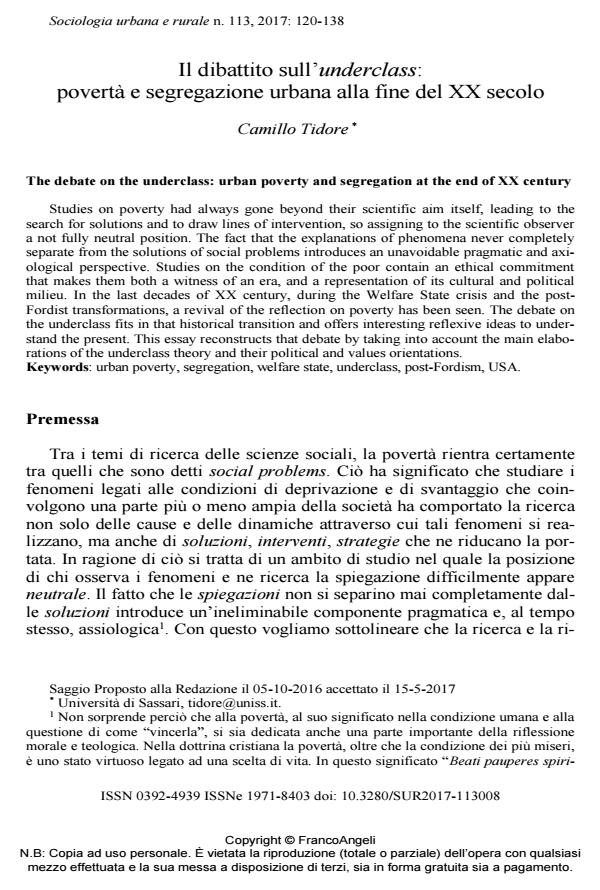The debate on the underclass: urban poverty and segregation at the end of XX century
Journal title SOCIOLOGIA URBANA E RURALE
Author/s Camillo Tidore
Publishing Year 2017 Issue 2017/113
Language Italian Pages 19 P. 120-138 File size 475 KB
DOI 10.3280/SUR2017-113008
DOI is like a bar code for intellectual property: to have more infomation
click here
Below, you can see the article first page
If you want to buy this article in PDF format, you can do it, following the instructions to buy download credits

FrancoAngeli is member of Publishers International Linking Association, Inc (PILA), a not-for-profit association which run the CrossRef service enabling links to and from online scholarly content.
Studies on poverty had always gone beyond their scientific aim itself, leading to the search for solutions and to draw lines of intervention, so assigning to the scientific observer a not fully neutral position. The fact that the explanations of phenomena never completely separate from the solutions of social problems introduces an unavoidable pragmatic and axiological perspective. Studies on the condition of the poor contain an ethical commitment that makes them both a witness of an era, and a representation of its cultural and political milieu. In the last decades of XX century, during the Welfare State crisis and the post-Fordist transformations, a revival of the reflection on poverty has been seen. The debate on the underclass fits in that historical transition and offers interesting reflexive ideas to understand the present. This essay reconstructs that debate by taking into account the main elaborations of the underclass theory and their political and values orientations.
Keywords: Urban poverty, segregation, welfare state, underclass, post-Fordism, USA.
Camillo Tidore, Il dibattito sull’underclass: povertà e segregazione urbana alla fine del XX secolo in "SOCIOLOGIA URBANA E RURALE" 113/2017, pp 120-138, DOI: 10.3280/SUR2017-113008